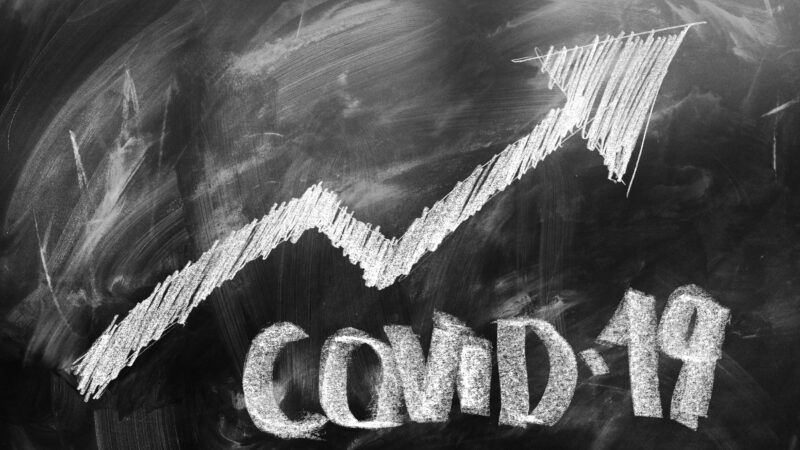Americans Are Nowhere Near Herd Immunity to COVID-19
Blood test study finds that only about 10 percent of Americans are immune to the virus.

We are nowhere near achieving COVID-19 herd immunity according to a new study in the journal JAMA Internal Medicine. The researchers reached this conclusion based on an analysis of routine blood tests sent to commercial laboratories through the end of September taken from nearly 178,000 people in 52 U.S. jurisdictions. In this seroprevalence screening study, the researchers are seeking to detect what proportion of Americans have developed disease resistance antibody proteins produced by the immune system in response to infections by the COVID-19 virus. The study relied upon the results of routine blood tests while excluding tests taken from patients suspected of having COVID-19.
Herd immunity is the resistance to the spread of a contagious disease that results if a sufficiently high proportion of a population is immune to the illness. Some people are still susceptible, but they are surrounded by immune individuals, who serve as a barrier preventing the microbes from reaching them. Herd immunity is generally achieved via mass vaccination. An accompanying commentary by three public health researchers noted, "Unfortunately, history has shown that although herd immunity resulting from infection can curb pandemics, it does not eradicate diseases."
Earlier in the pandemic, various researchers made speculative calculations (many of which I reported) suggesting that COVID-19 infections were much more prevalent than had been detected and that the herd immunity threshold for COVID-19 might be reached if only 15 percent of the population were infected. The recent massive surge in infections belies these hopeful hypotheses.
Most researchers now believe that achieving the herd immunity threshold for COVID-19 would require that close to 60 to 70 percent of the population will have to have been infected or vaccinated. Without a vaccine, that means that around 200 million Americans would have to get infected before we reach this threshold. Data scientist Youyang Gu over at the COVID-19 Projections website estimates that perhaps 50 million Americans have so far been infected by the virus.
The JAMA study finds that by the end of September fewer than 10 percent of people in the U.S. had evidence of previous COVID-19 infection using currently available antibody tests. The researchers note, "Seroprevalence varied across regions and between metropolitan/nonmetropolitan areas, with estimates as high as 23% in the Northeast and 13% in the South, while estimates in the Midwest and West were less than 10%." They conclude, "Our results reinforce the need for continued public health preventive measures, including the use of face masks and social distancing, to limit the spread of SARS-CoV-2 in the US."
The JAMA commentary observes, "In summary, a robust and well-designed seroprevalence study using residual serum samples from across the US has found that herd immunity to [COVID-19] is nowhere in sight, even as the COVID-19 pandemic has raged on for a year." The commentators conclude that "achieving herd immunity through natural infections will take years of painful sacrifice that are tallied in numerous deaths, severe long-term health sequelae, and widespread economic disruption and hardship. Let us hope that safe and effective vaccines help avoid the consequences of naturally developing herd immunity to COVID-19, as they have reliably done for so many other respiratory viruses."


Show Comments (254)